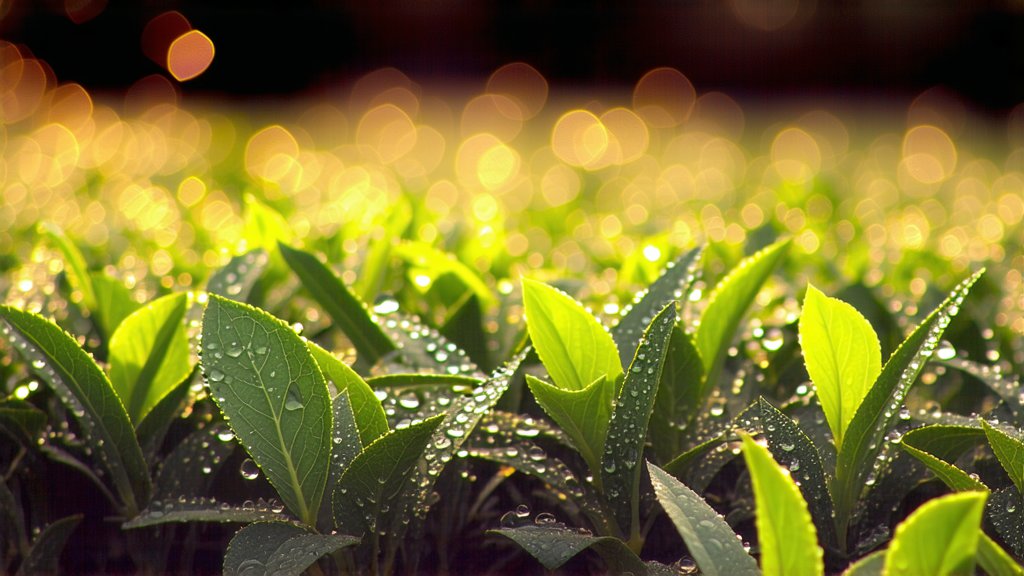
Nestled within the lush landscapes of China's Fujian Province lies a treasure trove of tea history and culture, where the air is perpetually perfumed with the subtle aroma of tea in various stages of cultivation and processing. Among the myriad varieties that grace this land, one stands out for its ethereal beauty and distinctive character—Bai Mudan, or "White Peony," a quintessential representation of Chinese white tea. This article embarks on a captivating exploration of Bai Mudan, delving into its storied past, diverse classifications, intricate craftsmanship, and the art of savoring its delicate flavors, all while maintaining an academic tone befitting the discourse on such a revered subject.
Historical Roots: A Legacy Etched in Time
The origins of Bai Mudan can be traced back to the early Tang Dynasty (618-907 AD), a period marked by flourishing arts, culture, and, notably, tea cultivation. Legend has it that the tea was first discovered by a monk named Wei Hong during his meditation under a wild tea tree in Fuding County. Intrigued by the unique taste and aroma, he propagated its cultivation, thus initiating a legacy that would span centuries. Over time, Bai Mudan evolved from a local specialty to a nationally acclaimed tea, earning prestigious mentions in ancient texts and becoming a symbol of refinement during imperial times. Its name, translating to "White Peony," reflects not only the visual appeal of the tea but also its association with purity and elegance.
Varietals and Classifications: A Spectrum of Subtleties
Bai Mudan encompasses a range of grades, each with its own distinct characteristics shaped by factors such as the maturity of the leaves and the precision of harvesting techniques. At the pinnacle sits Bai Mudan Wang Zhen Hao, or Supreme Grade White Peony, comprised solely of unopened buds and young leaves, offering an unparalleled level of finesse and fragrance. Following closely are Bai Mudan Wang Zhen and Bai Mudan Xian Zhen, which include a mix of buds and leaves, presenting a balanced profile between sweetness and complexity. These classifications highlight the meticulous attention to detail in selecting and processing tea leaves, ensuring that every sip delivers a nuanced experience.
Crafting the Elixir: An Artful Process
The creation of Bai Mudan is a testament to the artisanal prowess of tea masters, involving a series of meticulous steps designed to preserve the natural essence of the tea leaves. Harvested during the spring season when the weather is cool and damp, optimal for preserving freshness, the process begins with careful handpicking of the youngest shoots and leaves. These are then withered under controlled conditions, allowing them to lose moisture gradually without exposure to direct sunlight, which preserves their pale hue and prevents oxidation.
Next comes the crucial stage of fixation through gentle baking or sun drying, which halts enzymatic activity and sets the foundation for Bai Mudan’s characteristic flavor profile. The leaves are then lightly rolled to encourage further drying and shaping before undergoing a final round of drying. This minimal intervention approach ensures that the inherent qualities of the tea—its subtle sweetness, floral notes, and smooth texture—are retained in their purest form.
Savoring the Symphony: The Art of Tasting Bai Mudan
To truly appreciate Bai Mudan is to engage in a sensory journey that transcends mere consumption; it is an act of mindfulness and appreciation for nature's bounty. The ritual begins with the selection of a suitable vessel, often a clear glass or white porcelain cup, which allows one to admire the tea's aesthetic beauty as it unfurls. Water temperature plays a pivotal role, ideally set between 75-85°C (167-185°F), to coax out the delicate flavors without scalding the leaves.
As the tea steeps, typically for about 2-3 minutes, one can observe the transformation from tightly wound leaves to a dance of silver needles and green petals. The first infusion reveals a light golden liquor, exuding a fragrant bouquet reminiscent of fresh apricots, honeysuckle, and a hint of muscatel. Upon tasting, Bai Mudan envelops the palate with a silky texture, a harmonious blend of sweetness and a whisper of umami, leaving behind a cleansing aftertaste that invites contemplation.
Subsequent infusions unlock deeper layers of complexity, with each brew revealing new facets of flavor and aroma. The longevity of Bai Mudan in multiple steepings underscores its quality and the skill involved in its production. To fully immerse oneself in this experience, it is recommended to adopt a meditative mindset, focusing on the interplay of sight, smell, taste, and even sound—the gentle rustling of tea leaves as they steep—to appreciate the holistic sensory tapestry Bai Mudan weaves.
In conclusion, Bai Mudan stands as a paragon of Chinese tea artistry, embodying centuries-old traditions while continuing to captivate modern tea enthusiasts worldwide. Its history, diversity, craftsmanship, and the profound pleasure derived from its consumption make it more than just a beverage; it is a cultural artifact, a bridge connecting past and present, inviting all who encounter it to partake in a timeless ritual of tranquility and reflection. Through understanding and appreciating Bai Mudan, one gains insight not only into the depths of Chinese tea culture but also into the universal pursuit of harmony, balance, and the simple yet profound joy found in nature's gifts.